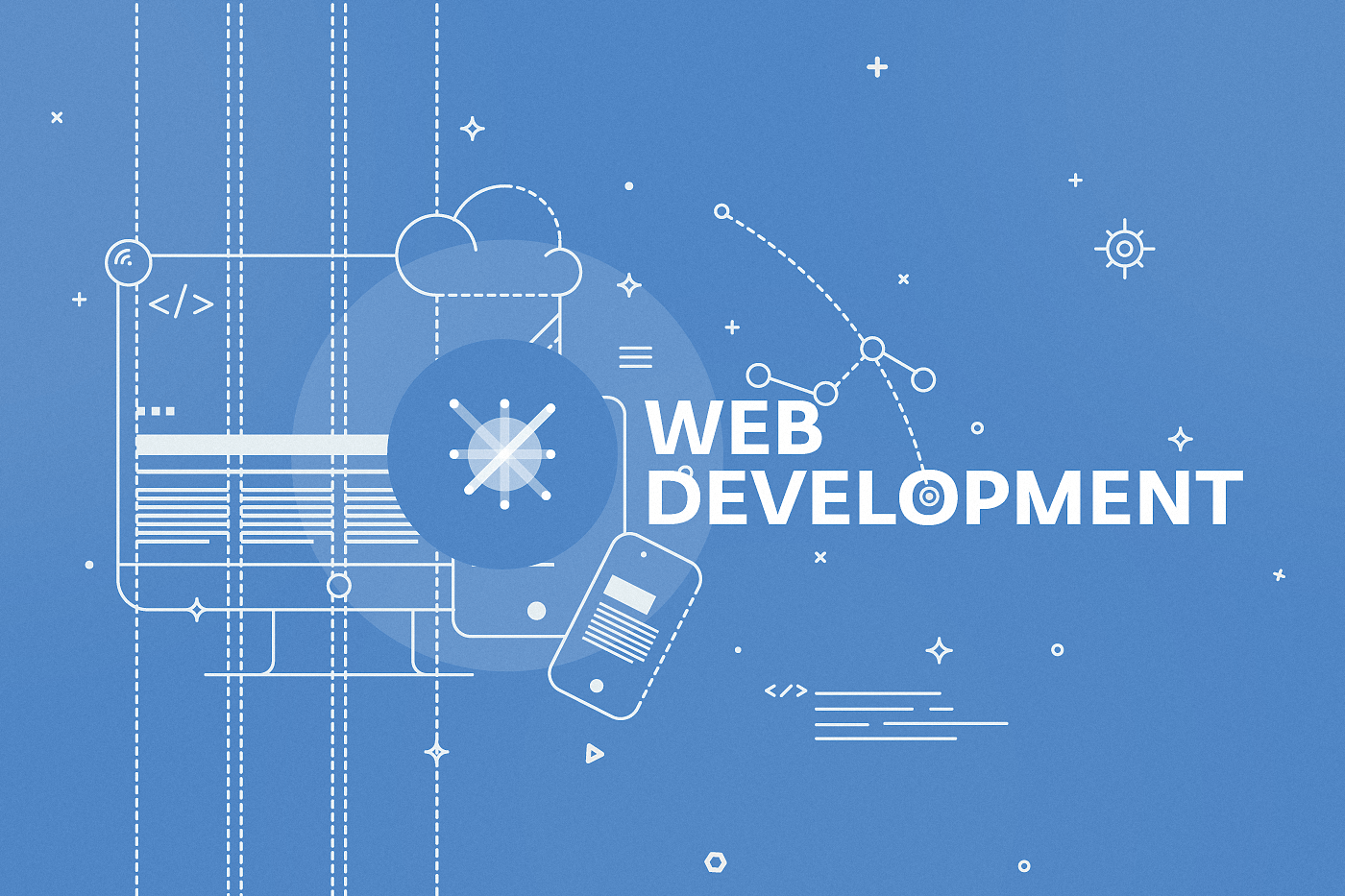Things a Web Developer Needs to Learn
 Aman kumar keshri
Aman kumar keshri
Introduction:
Web development is a dynamic and ever-evolving field, and staying relevant as a web developer requires continuous learning and skill development. Whether you're a beginner just starting your journey or an experienced developer looking to keep up with the latest trends, there are certain fundamental and advanced skills you need to master. In this comprehensive guide, we'll discuss the essential things a web developer needs to learn to thrive in this exciting and competitive industry.
HTML and CSS: The Building Blocks of the Web:
HTML (Hypertext Markup Language) and CSS (Cascading Style Sheets) are the foundational languages of web development. HTML defines the structure and content of a web page, while CSS is used to style and format that content. Every web developer must have a solid grasp of these technologies to create web pages and make them visually appealing.
HTML is used to structure content, defining elements like headings, paragraphs, links, images, and forms. CSS, on the other hand, controls the layout, colors, fonts, and overall styling of the page. Understanding these two languages is fundamental to web development.
JavaScript: The Language of Interactivity:
JavaScript is the key to adding interactivity and functionality to web pages. Learning JavaScript allows developers to create dynamic features, handle user interactions, and build responsive web applications. Understanding JavaScript is essential for modern web development.
JavaScript can be used for tasks such as form validation, creating interactive maps, managing animations, and communicating with server-side scripts. Libraries like jQuery and frameworks like React and Angular build upon JavaScript, providing advanced tools and structures for web development.
Responsive Web Design: Creating for All Devices:
With the increasing variety of devices and screen sizes, web developers must learn responsive web design. This approach ensures that web applications and websites adapt to different screen sizes and work seamlessly on mobile devices, tablets, and desktops.
Responsive web design involves using media queries, flexible grids, and fluid images to create a layout that adjusts to the user's screen. It provides a better user experience and improves SEO by adhering to Google's mobile-first indexing.
Front-End Frameworks: Streamlining Development:
Front-end frameworks like React, Angular, and Vue.js are powerful tools for building interactive and efficient user interfaces. Learning one or more of these frameworks can significantly boost a developer's productivity and skill set.
These frameworks provide pre-built components, a structured architecture, and state management, making it easier to develop complex web applications. They also follow best practices, ensuring code maintainability and scalability.
Version Control: Git and GitHub:
Git is a distributed version control system, and GitHub is a platform that hosts Git repositories. Learning to use Git and GitHub is essential for collaborative web development, enabling developers to work together, track changes, and manage code efficiently.
Version control systems like Git allow you to track code changes, collaborate with others without conflicts, and revert to previous versions when needed. Platforms like GitHub provide a centralized place to store and share code, making it accessible to a broader community.
Back-End Development: Building the Server-Side:
Web developers should understand back-end development as well. This involves working with server-side technologies, databases, and server configurations. Common back-end languages include Python, Ruby, PHP, and Node.js.
Back-end development involves building a server that handles requests, processes data, interacts with databases and sends responses to the front-end. It's responsible for the application's logic, security, and performance.
Databases: Structured and NoSQL:
Data is a crucial component of web applications, and web developers need to learn how to work with databases. SQL databases like MySQL and PostgreSQL, as well as NoSQL databases like MongoDB, are widely used in web development.
SQL databases are relational and suitable for structured data. They use a query language (SQL) to interact with data. NoSQL databases are non-relational and offer flexibility for unstructured or semi-structured data. Web developers must choose the right database based on the project's requirements.
APIs and Web Services: Connecting to the World:
Web developers should know how to create and consume APIs (Application Programming Interfaces). Understanding RESTful APIs and interacting with web services is fundamental for integrating data and services from other sources into your web applications.
APIs allow web applications to communicate with external services, retrieve data from databases, or interact with third-party applications. Learning how to design and consume APIs is crucial for building dynamic and data-rich web applications.
Web Security: Protecting User Data:
Web security is a critical aspect of web development. Developers need to learn how to protect user data and ensure their web applications are secure from common threats, such as cross-site scripting (XSS) and SQL injection.
Understanding common security vulnerabilities and best practices is essential for preventing data breaches and maintaining the trust of users. Techniques like input validation, secure authentication, and HTTPS usage should be part of a web developer's skill set.
Performance Optimization: Speed Matters:
Web performance is essential for user satisfaction. Learning about techniques for optimizing website loading times, minimizing HTTP requests, and reducing page load sizes is crucial for delivering a seamless user experience.
Performance optimization involves tasks like image compression, minifying CSS and JavaScript, enabling browser caching, and utilizing content delivery networks (CDNs). A fast website not only improves user experience but also contributes to better search engine rankings.
DevOps and Deployment: Taking It Live:
Understanding DevOps principles and deployment strategies is vital for releasing web applications into the real world. Learning about continuous integration, continuous deployment (CI/CD), and cloud services like AWS and Azure can streamline the deployment process.
DevOps is about automating the development pipeline, ensuring smooth integration, testing, and deployment processes. Cloud services provide scalable infrastructure and hosting options, reducing the need for physical servers and making deployment more flexible.
Testing and Debugging: Quality Assurance:
Web developers should know how to test and debug their code thoroughly. Learning testing frameworks and debugging tools will help identify and fix issues more efficiently.
Testing can encompass unit testing, integration testing, and end-to-end testing. Debugging involves using browser developer tools, code analysis, and error tracking to identify and resolve issues. Ensuring the quality and stability of your web applications is a crucial part of the development process.
Accessibility: Inclusive Web Design:
Ensuring that web applications are accessible to people with disabilities is not only ethically responsible but also often legally required. Learning about web accessibility standards (e.g., WCAG) and implementing accessible features is a crucial aspect of modern web development.
Web accessibility involves making web content perceivable, operable, and understandable for all users, including those with disabilities. This includes considerations for screen readers, keyboard navigation, alt text for images, and proper semantic markup.
The Importance of Soft Skills: Communication and Collaboration:
In addition to technical skills, web developers need to hone their soft skills. Effective communication, collaboration, problem-solving, and project management are essential for working well in teams and delivering successful projects.
Effective communication with team members, clients, and stakeholders is crucial for understanding project requirements and expectations. Collaboration skills are needed to work in cross-functional teams, while problem-solving and project management skills help in addressing challenges and delivering projects on time and within budget.
Conclusion:
Web development is a dynamic field that demands continuous learning and adaptation. By mastering these essential skills, web developers can stay competitive and build exciting and innovative web applications. Remember that staying up-to-date with the latest industry trends and technologies is just as important as mastering the fundamentals. Web developers who commit to lifelong learning will find themselves well-prepared for the challenges and opportunities that lie ahead in this exciting profession. Whether you're just starting or looking to expand your skills, these fundamental and advanced concepts will help you thrive in the ever-evolving world of web development.
Subscribe to my newsletter
Read articles from Aman kumar keshri directly inside your inbox. Subscribe to the newsletter, and don't miss out.
Written by

Aman kumar keshri
Aman kumar keshri
I am a Tech Learner.